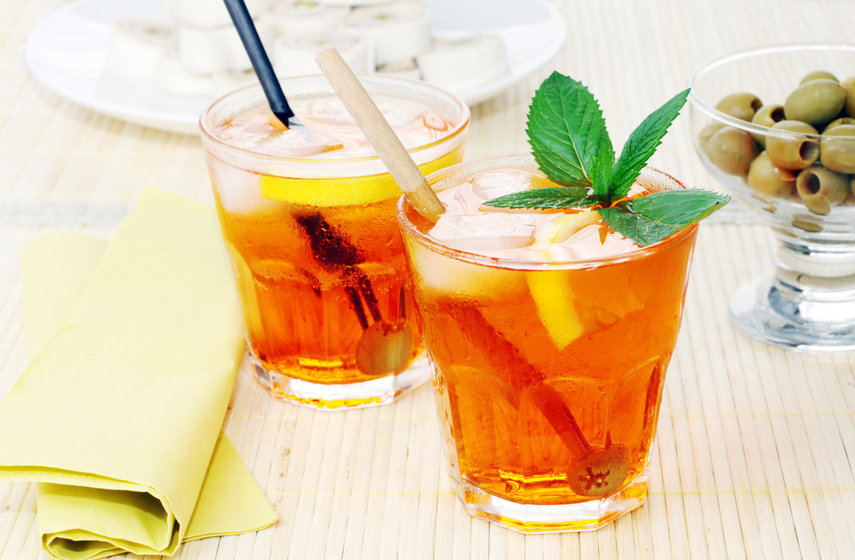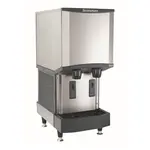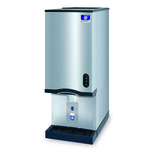
To provide your customers with the ultimate fine dining experience, you’re going to need more than just bottles of wine and fancy cocktails. By offering before and after-dinner drinks to your guests, you can provide your guests a memorable and complete experience right from start to finish. While aperitifs are drinks that stimulate your customers’ taste buds and hunger pangs, digestifs enable your guests to sit back and relax after a possibly over-indulgent meal.
Providing drinks after dinner, or as appetizers, allows you to showcase a wide variety of options on your drink menu along with selling additional items per table - helping you enhance the revenue with each order. You also have the option of serving items such as rich dark chocolate or artisanal cheeses that go well with liquors and after-dinner cocktails. While the purpose of these drinks is to stimulate the appetite before dinner, and digestion after - you can make the best of these concepts to market your establishment as the neighborhood's up-and-coming high-end food business.
What is An Aperitif Drink?
Aperitifs are cocktails and liquors served before a meal. They enhance appetite and also prepare your taste buds for an upcoming meal. These drinks allow your guests a few moments of relaxation and time to unwind before they begin their meal. Aperitifs can be served with a light snack that’s either bland or mildly savory, so the best pairing options include olives, crackers, or even chips. Aperitifs are supposed to stimulate appetite, so alcohols with low sugar content are preferred.
The alcohol content in the best aperitif cocktails is low and is kept below 20%. High alcohol content in a drink can have a negative effect on appetite, and these drinks mustn’t extend into the high ABV category, lest you hamper your guests’ interest in your delicious offerings. The most commonly served aperitifs include vermouth, wine, and gin. A lot of aperitifs contain herbal influences which add to the bitter taste profile, and stimulate your digestive system to get the juices flowing.
An Essential List of Aperitifs
Before we get to the after-dinner drinks, it’s important to take a look at what you can serve as aperitifs to your guests. Contrary to popular belief, the best aperitifs are not intricately prepared cocktails but are neat and base liquors served on their own. Read on as we discuss the best aperitif options for your restaurant:
- Vermouth
Vermouth is a type of fortified wine that has a long and rich history spanning over two millennia. The liquor is prepared by adding a distilled alcoholic beverage to the wine. While most people think vermouth is a single class of alcohol, that’s far from true. The drink has both sweet and dry (bitter) varieties that can be served on different occasions. Dry vermouth happens to be one of the best aperitif wines capable of preparing your guests for a sumptuous meal.
- Campari
This liquor comes from the rich Italian distillery tradition and has a notably bitter taste profile. It infuses elements such as bark, herbs, fruit, and water with a base neutral alcohol to bring about its strong and acerbic taste. It has a deep reddish hue and is sure to get your guests excited for the full-course meals that follow.
- Aperol
Another drink that originates in Italy, Aperol is a beloved drink used in a very popular cocktail - Aperol spritz. Aperol can either be served by itself or as a cocktail since its preparations are fairly simple. The drink infuses a range of fruity flavors and has an attractive orange color. The preparation of this liqueur involves cinchona, rhubarb, gentian, and a hint of citrus. The drink is light and perfectly fits the aperitif definition.
- Lillet Blanc
This aperitif is a French wine-based derivative that involves rich floral, herbal, and other botanical flavors. Topped with quinine and classified as an aromatized wine, the liquor is one of the best aperitifs if you’re looking to serve something chilled, light, and just right to prepare your guests for a feast. The liquor also goes well with club soda and other elements such as lime extract.
- Pimm’s
Though this drink has a healthy dose of sweet and fruity elements, it’s a light and enjoyable drink that makes it a perfect fit for the aperitifs list. The drink is a gin-based liqueur that’s infused with fruit peels, quinine, and other herbal elements. It’s a perfect drink for the summers and can also be used to tingle your customers’ taste buds before they begin indulging in your establishment’s elaborate spread.
- Martini
Though cocktails aren’t the best aperitifs, a simple martini with just a blend of gin, vermouth, and lemon twist makes the most beloved aperitif on the menu. Martinis have a wide variety of taste profiles, but you should try to create a rather dry cocktail or one with the right balance of both dry & sweet for your patrons to relish.
What is A Digestif Drink?
Digestifs are after-dinner drinks served to guests to help their digestive systems deal with the influx of rich, heavy delicacies over the evening. These drinks are not just an added benefit of the revelry that surrounds fine dining, but they also enable guests to avoid the uncomfortably full feeling after indulging in their favorite delights. These drinks are heavy in alcohol content - a factor that suppresses appetite and stimulates digestion. Drinks after dinner are often served in small quantities and are consumed best by sipping on the glass instead of taking large gulps.
Digestifs are drinks that are both bitter, and high in sugar content. Since these drinks are supposed to help your guests digest their meals efficiently, it’s best to add a dash of ginger to these drinks to help enhance that process. While several culinarians believe bitter liquors make great digestifs, dessert wines and cocktails also make perfect after-dinner drinks. Digestifs can combine several taste notes & profiles such as herbal, floral, botanical, sweet, and bitter.
An Essential List of Digestifs
The best digestifs and after-dinner drinks are meant to help with digestion. With high alcohol content, either dry, sweet, or a blend of both tastes, the drinks often served as digestifs are liqueurs, fortified & dessert wines, aged alcohol, and certain cocktails. Here’s the list of the best digestifs you can serve to your customers:
- Amaro
These rich Italian concoctions offer a bittersweet experience to the drinkers that look to sit back and relax after a delicious meal. It has rich flavors that come from infused herbs, botanicals, fruit extract, and bark. These drinks are served as a standalone and are not mixed into cocktails. Amaros have nearly 35% of alcohol by volume, and have a smoky aftertaste.
- Grappa
This is a dedicated digestif that’s prepared from waste materials following a grape harvest. Grappa originates in Italy and is made of materials like grape seeds and stems. The resulting liquor from the fermentation of these materials is distilled and used for preparing grappa. This drink is very high in alcohol content and is categorized as a spirit. It’s common for grappa to be paired with espresso.
- Sherry
Sherry is a fortified wine that originated in Spain. It is also considered a dessert wine and is prepared by aging wine after the addition of distilled spirit. The drink has a sweet and syrupy taste that makes for a perfect after-dinner drink. Sherry comes in several varieties and also has types that have a more savory taste profile.
- Ouzo
Ouzo is a preparation that’s made from the remnants of winemaking, much like grappa. The drink is from Greece and is a big part of the local culture. Ouzo is spicy and comes with a variety of sharp flavors that it derives from star anise, coriander, and fennel. The digestif also bears a slight undertone of licorice and makes for a good choice for drinks after dinner.
- Brandy
This aged, dark spirit happens to be one of the oldest digestifs on the list. Brandy makes a great after-dinner drink due to both - its sweetness and its high alcohol content. The drink brings to the palate a few remnants of fermentation & distillation which include hints of grapes and apples. The drink is warm, subtle in its sweetness, and brings about a sense of ease and satiation.
- Port Wine
This after-dinner drink is another fortified wine and has a deep red color. The drink can be relished with a platter of sides like cheese, chocolate, and desserts. Port wine that isn’t aged is quite sweet and has a very fruity flavor profile. Aged varieties have sharper tastes and have notes of chocolate and spice. These wines come from Portugal, and despite their relatively low alcohol content compared to others on this list, port wines make for good digestifs.
The Takeaway
Aperitifs and digestifs provide a great way to expand your existing drink menu and allow you to cater to the finer needs of your customers. Since these drinks are served in small quantities and are chilled to mellow their strong taste profiles, make sure you have the right kind of bar equipment and ice makers to support your endeavors. Be sure to refer to the provided before and after drinks lists to ensure you include the essentials in your menus and treat your customers to the best dining experience possible.














